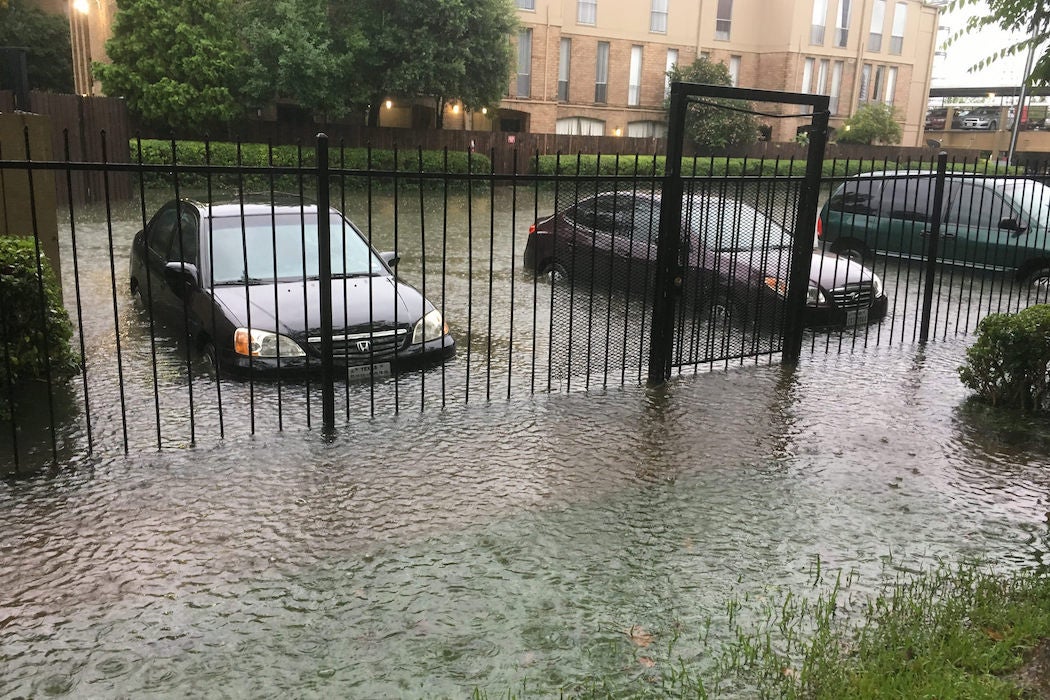As the center of the petroleum industry in the United States, Houston faces significant environmental damage from Hurricane Harvey. The most spectacular example during the storm was an explosion and fire at the Arkema chemical plant in Crosby, Texas. But Harris County has the largest number of Superfund sites in the country, and the region is still discovering the extent to which floodwaters spread around human and petrochemical wastes.
One large category of waste the storm produced: an estimated 500,000 cars that were flooded and totaled. Hurricane Irma produced thousands more. Most articles on the subject focus on the economic impact of losing a car for working-class Texans, or the risk others will buy flood-damaged cars from unscrupulous sellers. Another problem? Recovering and junking hundreds of thousands of cars all at once taxes a system constructed over the past fifty years to process this waste without releasing even more heavy metals and other toxic chemicals into the environment. Harvey hit Texas, but car shredders across the world will be churning for weeks to chew up and spit out the scrap metal in the cars that temporarily sat in the Gulf of Mexico.
Two scrap yard companies separately invented car shredders around 1960, according to Carl Zimring, to address specific economic and cultural demands. At the rate Americans consumed cars until World War II, scrap metal dealers could profitably recover metal from junked cars by having workers physically strip old auto bodies and cut the metal apart by hand. But postwar prosperity meant consumers could afford to buy new cars far faster than scrap yards could disassemble them. One of the early issues of the environmental movement was a call to reduce the visual blight of large automobile junkyards that lined U.S. highways. The 1965 Highway Beautification Act, promoted by Lady Bird Johnson, codified this call into law.
Car shredders thus satisfied two demands: removing ugly junkyards and producing valuable steel scrap, which could be removed by electromagnets, leaving behind glass, wood, plastic and other materials. The spread of the shredders led to the virtual disappearance of local junkyards and the consolidation of the scrap metal industry. Governments, engineers, and scientists lauded shredders as a technological solution to environmental pollution.
Weekly Newsletter
However, the meaning of “environmental pollution” has evolved over time—along with the materials used in making cars. The communities where large car shredders operated soon started complaining about both the noise and the dust they produced. Older cars used asbestos in brake pads and lead in paint and gas tanks, which was getting pulverized into the air. Since 1970, cars have included increasing amounts of plastic as well as electronics and chemicals such as PCBs, CFCs, and acids which come out of shredders as mixed “fluff” difficult to put in landfills and impossible to recycle. Manufacturers and users today remove the toxic elements like batteries before shredding, and try harder to prevent fluff from leaking into the air and groundwater. But a more cost-effective solution has been to move shredding operations to countries with weaker environmental regulations.
The disaster of Harvey has prompted urban planners to offer recommendations for rebuilding Houston in a way that will make it less vulnerable to hurricanes in the future. Is it too optimistic to hope for the adoption of a better public transit system that even mildly discourages car ownership? Although a car seems like a long-term capital investment, it is only a crash or disaster away from becoming two tons of mass-consumer junk.







